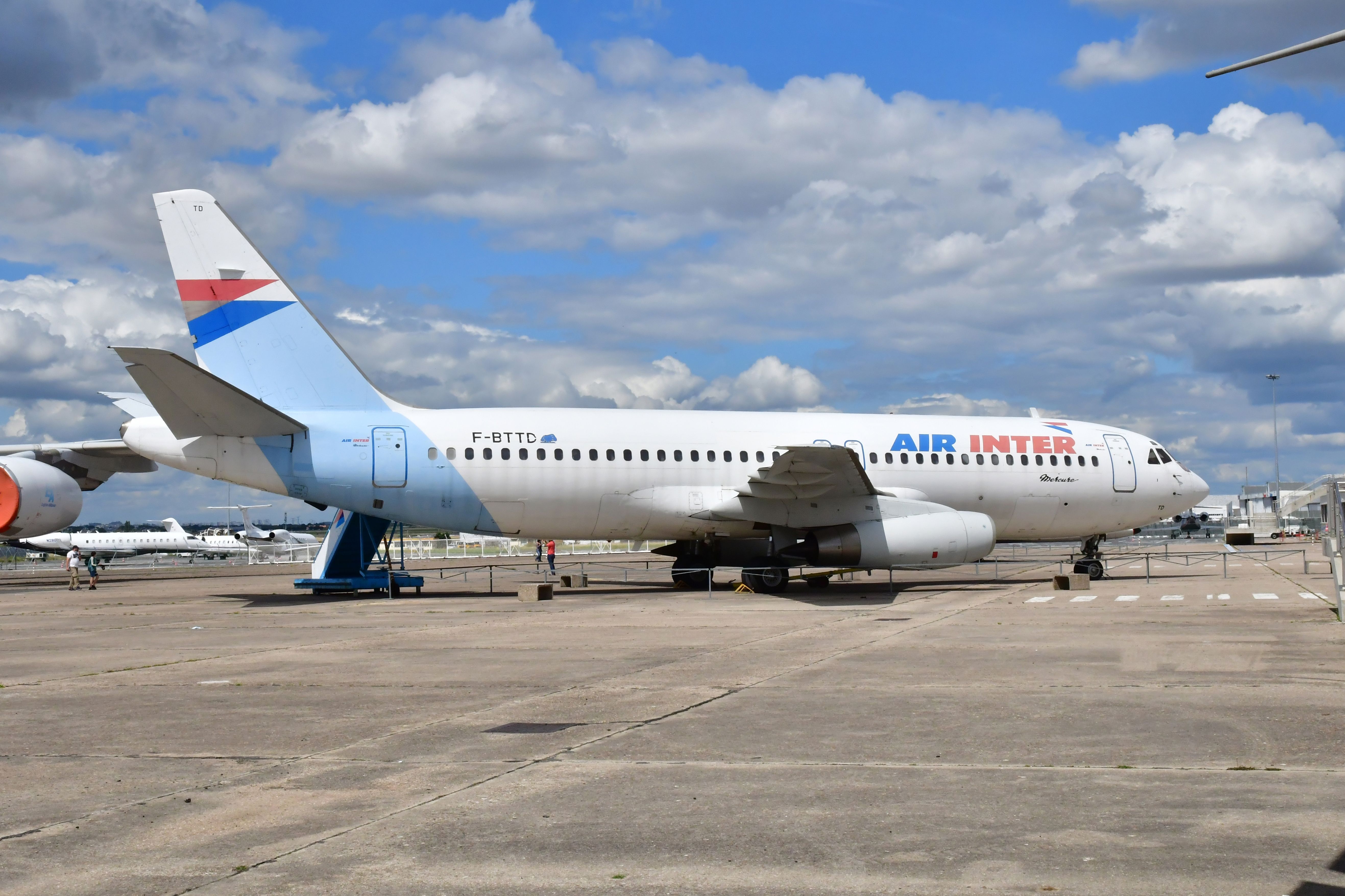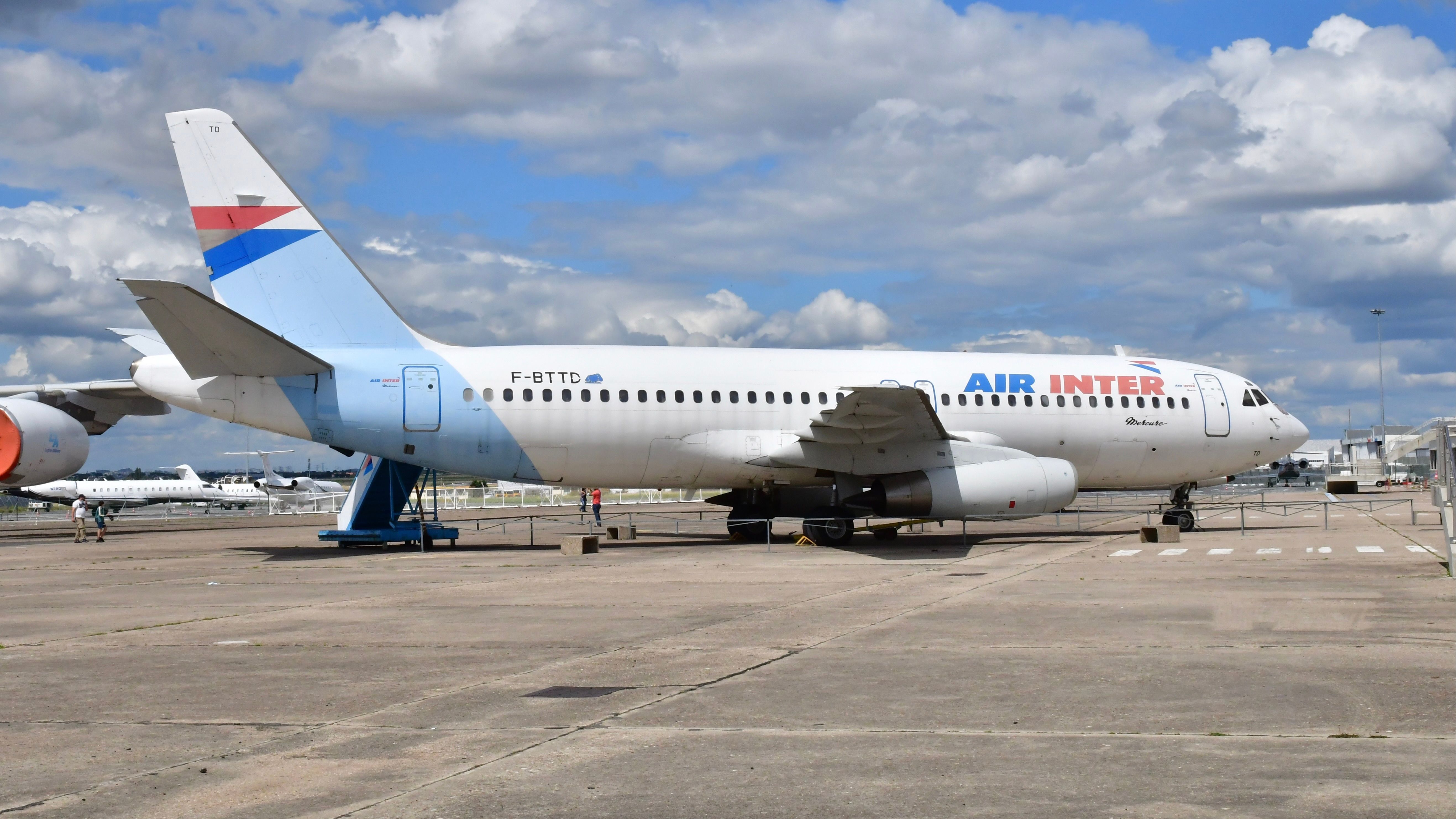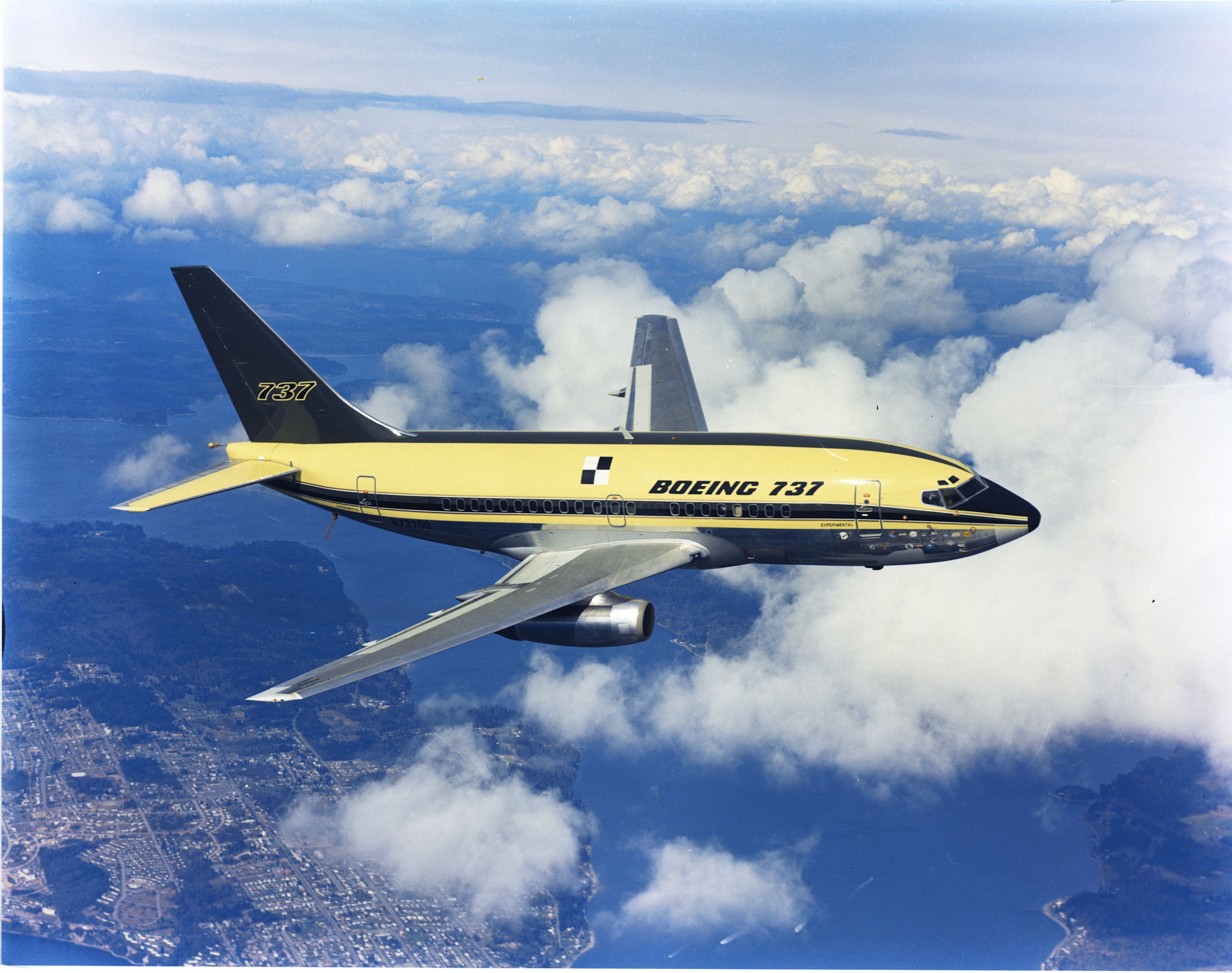The 1960s and 1970s were exciting and important times for aircraft development. Boeing had seen success with the Boeing 707 and 727, and there was growing interest from airlines in a more economical two-engine option. The 737 performed its first flight in 1967 and has, as we know, gone on to be the most delivered aircraft to date. Other manufacturers tried to compete, though, with varying success. The French-built Dassault Mercure was one such competitor. Only 12 aircraft were ever built, with the French airline Air Inter being the only operator.
Twin-engine development
The Boeing 737 has gone on to be a huge commercial success – the most delivered commercial aircraft to date (although Airbus has edged ahead in orders now with the A320 series). In the late 1960s, though, it offered new solutions for the industry.
There was a demand for more economical twin-engine aircraft at this time to serve short and medium-haul routes. Several manufacturers offered options – including the Douglas DC-9, the BAC One-Eleven, and the Caravelle from Sud Aviation. Boeing, though, rose to success with its design. Instead of mounting the engines at the rear of the fuselage, it placed them under the wing. This allowed for a wider six-across cabin and the ability to handle standard-size freight containers. It also allowed for easier access to the engines for maintenance.
Other manufacturers followed, including the French manufacturer Dassault. It saw the market possibility for a European-built alternative to the Boeing 737 and launched the Mercure as its first venture into airline aircraft manufacturing (it has previously built military aircraft and smaller jets).
Check out all the latest European aviation news here.
Entering service in 1974
Inspired by the early success of the Boeing 737, Dassault launched the development of its new aircraft in the late 1960s. The French government partially funded development.
The initial (and only) Mercure type first flew in 1971. It was powered by two Pratt & Whitney JT8D engines and offered a single class capacity of 162 (larger than the 737-200 at the time but surpassed later by the 737 Classic series). The compromise of this higher capacity was a reduced range.
French outfit Air Inter introduced the aircraft on June 4, 1974. The carrier would become the only operator of the type in history.
Failing to generate interest
Air Inter placed an initial order for ten aircraft. Air Inter was a large domestic airline that operated from 1954 until it merged with Air France in 1997. It had previously operated several aircraft types, including the Caravelle, the Douglas DC-3, and the Vickers Viscount. It later went on to be a significant Airbus A300 and A320 operator too.
Despite attempts to market the aircraft in both Europe and the United States, no other customers for the Mercure were ever found. Its short range was cited as a leading reason. The oil crisis and economic situation in the 1970s did not help either.
In addressing its weaknesses, Dassault proposed an updated Mercure 200 variant. This would offer an increased range and utilize the higher-powered CFM International CFM56 engine. Despite some interest, development was never pursued.
Love aviation history? Discover more of our stories here.
Only 12 units were ever built
The ten sales to Air Inter were the only ones ever made. In light of this, the French government even provided a subsidy to Air Inter for the higher cost of operating such a smaller and isolated fleet. Two other aircraft were built as prototypes by Dassault. One of these later transferred to operate with Air Inter as well.
Dassault noted that the planes had a disadvantage due to the engines being relatively outdated, loud, and inefficient at the time of service. The company added:
"To remedy the situation, Dassault designed a new version of the Mercure – the Mercure 200 – with two Snecma/General Electric CFM 56 engines. Finally, only ten Mercure 100 aircraft were built,
"The assembly line was stopped on 19th December 1975. On 11th July 1983, Air Inter requested the adaptation of the prototype Mercure 02. It became the eleventh aeroplane in its fleet. At the time of their retirement, their track record was impressive: 360,000 flying hours, 44 million passengers transported during 440,000 flights, without an accident, with a regularity of 98%."
Air Inter began to retire the type in 1992 and withdrew its last aircraft from service in 1995. Several aircraft remain preserved in museums and on airport display in France (and one in Germany), although none are operational.

6 Preserved Examples: Where Can You Find The Dassault Mercure?
Only half a dozen units can be spotted.The Dassault Mercure was a bold move by a European manufacturer to compete. Unfortunately, it was also one of the worst commercial aviation developments ever, with just ten sales. Still, Dassault remains a force in aviation today. It has a diverse portfolio in the military space and has a stronghold in the the private jet field.
Did you ever fly on or work with the Mercure? What do you make of the aircraft's operations? We would love to hear about it in the comment section.



.jpg)